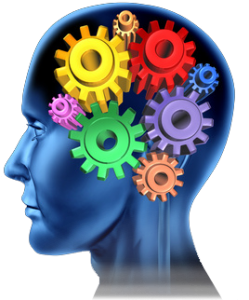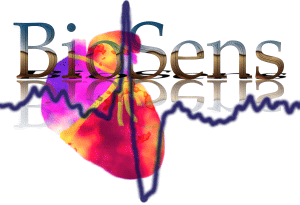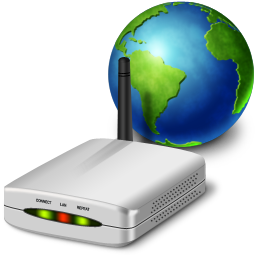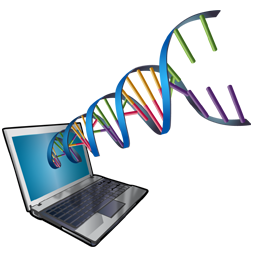Our Domains
The domain we concentrate for our research are given below, but to which we are not limited to these we are also extending our research areas.

Digital Image Processing: it is the use of computer algorithms to perform image processing on digital images.DIP has many advantages over analog image processing. It allows a much wider range of algorithms to be applied to the input data and can avoid problems such as the build-up of noise and signal distortion during processing. Since images are defined over two dimensions (perhaps more) digital image processing may be modeled in the form of multidimensional systems. There are different tools used for DIP like Mat Lab, SciLab, IDL etc.

Biomedical: Here the application of engineering principles and design concepts to medicine and biology for healthcare purposes (e.g. diagnostic or therapeutic). This field seeks to close the gap between engineering and diagnostic. It combines the design and problem solving skills of engineering with medical and biological sciences to advance healthcare treatment, including diagnosis, monitoring, and therapy. It comes as subsidiary of DIP in computer science concern.

Network: it is a communications network that allows computers to exchange data. The physical connection between networked computing devices is established using either cable media or wireless media. The best-known computer network is the Internet. Computer Network is one the major domain selected for research , as its wide are consisting of large sub domains in some of them are
Network Security: this consists of the provisions and policies adopted to prevent and monitor unauthorized access, misuse, modification, or denial of a computer network and network-accessible resources. Network security involves the authorization of access to data in a network, Different area under network security are Authentication, Key management, Encryption and decryption, Threat Management network analyzer.

Cloud Computing: In Computer science aspect , cloud computing is a synonym for distributed computing over a network and means the ability to run a program on many connected computers at the same time. More commonly, used to refer to network based services which appear to be provided by real server hardware, but which in fact are served up by virtual hardware, simulated by software running on one or more real machines. Such virtual servers do not physically exist and can therefore be moved around and scaled up (or down) on the fly, without affecting the end user – arguably, rather like a cloud.

Another Major area coming under Network is Wireless Network.
Wireless Network: Wireless network refers to any type of computer network that utilizes some form of wireless network connection, this also has other sub domains some of them are
Wireless Sensor Network: A wireless sensor network (WSN) consists of spatially distributed autonomous sensors to monitor physical or environmental conditions, such as temperature, sound, pressure, etc. and to cooperatively pass their data through the network to a main location. The more modern networks are bi-directional, also enabling control of sensor activity. The development of wireless sensor networks was motivated by military applications such as battlefield surveillance; today such networks are used in many industrial and consumer applications, such as industrial process monitoring and control, machine health monitoring, and so on. The WSN is built of nodes from a few to several hundreds or even thousands, where each node is connected to one (or sometimes several) sensors.
Some of its Sub Domains are
Adhoc Network: A wireless ad hoc network is a decentralized wireless network which does not rely on a preexisting infrastructure, such as routers in wired networks or access points in wireless networks. Instead, each node participates in routing by forwarding data for other nodes, and so the determination of which nodes forward data is made dynamically based on the network connectivity.
Mobile Network: A mobile network is a radio network distributed over land areas called cells, each served by at least one fixed-location transceiver, known as a cell site or base station. In a cellular network, each cell uses a different set of frequencies from neighboring cells, to avoid interference and provide guaranteed bandwidth within each cell.
MANET: A mobile ad hoc network (MANET) is a self-configuring infrastructure less network of mobile devices connected by wireless. Each device in a MANET is free to move independently in any direction, and will therefore change its links to other devices frequently. Each must forward traffic unrelated to its own use, and therefore be a router. The primary challenge in building a MANET is equipping each device to continuously maintain the information required to properly route traffic. Such networks may operate by themselves or may be connected to the larger Internet. MANETs are a kind of Wireless ad hoc network that usually has a routable networking environment on top of a Link Layer ad hoc network.

Data Mining: Data mining is the process of extracting patterns from data. It is commonly used in a wide range of profiling practices, such as marketing, surveillance, fraud detection and scientific discovery. Data mining an interdisciplinary subfield of science, is the computational process of discovering patterns in large data sets involving methods at the intersection of artificial intelligence, machine learning, statistics, and database systems. The overall goal of the data mining process is to extract information from a data set and transform it into an understandable structure for further use. Aside from the raw analysis step, it involves database and data management aspects, data pre-processing, model and inference considerations, interestingness metrics, complexity considerations, post-processing of discovered structures, visualization, and online updating.

Bio Informatics: this is an interdisciplinary field that develops and improves upon methods for storing, retrieving, organizing and analyzing biological data. A major activity in bioinformatics is to develop software tools to generate useful biological knowledge. Bioinformatics has become an important part of many areas of biology. In experimental molecular biology, bioinformatics techniques such as image and signal processing allow extraction of useful results from large amounts of raw data. In the field of genetics and genomics, it aids in sequencing and annotating genomes and their observed mutations. It plays a role in the textual mining of biological literature and the development of biological and gene ontologies to organize and query biological data.

Mobile Application: is a software application designed to run on smartphones, tablet computers and other mobile devices. These application are developed depending on the mobile Operating systems, which are typically provided by the owner of the mobile operating system, such as the IOS by Apple, Android by Google Play, Windows8 Phone by Microsoft etc. In the new trending world we have new mobile application area in IOS and Android. There any many mobile applications for these IOS and Android devices which makes the user make the device ready for many application on their move. Modern applications are developed using different sensors available in devices to serve the users with more ease on their move.
